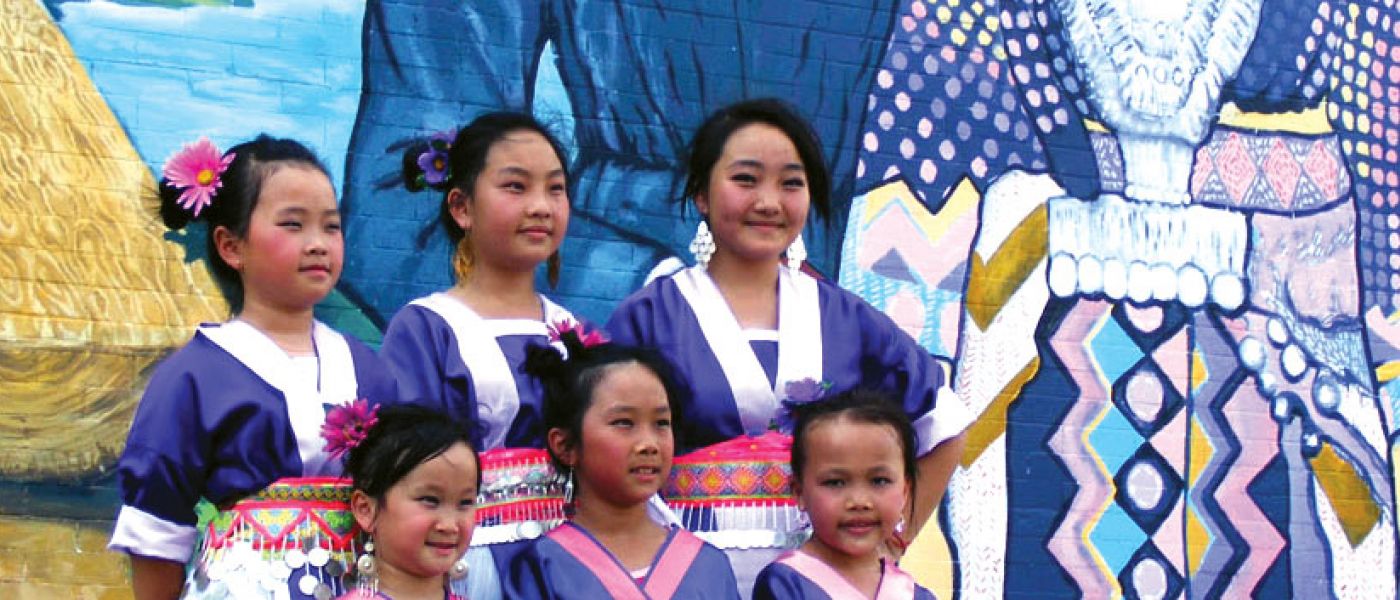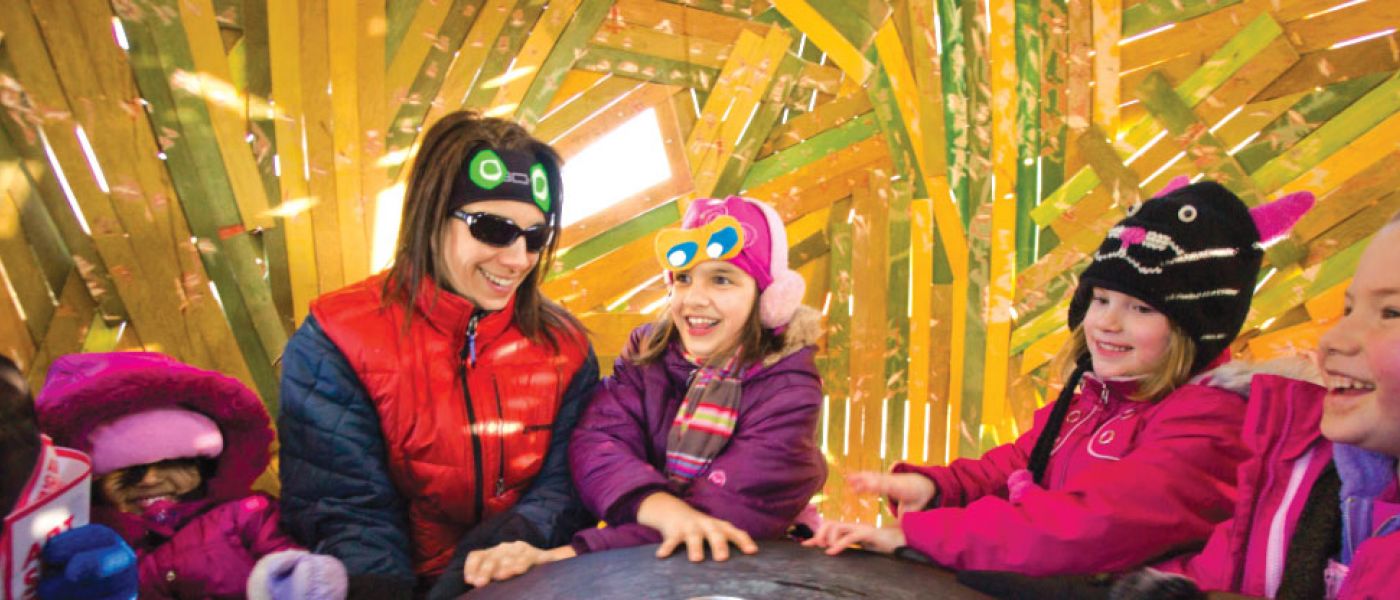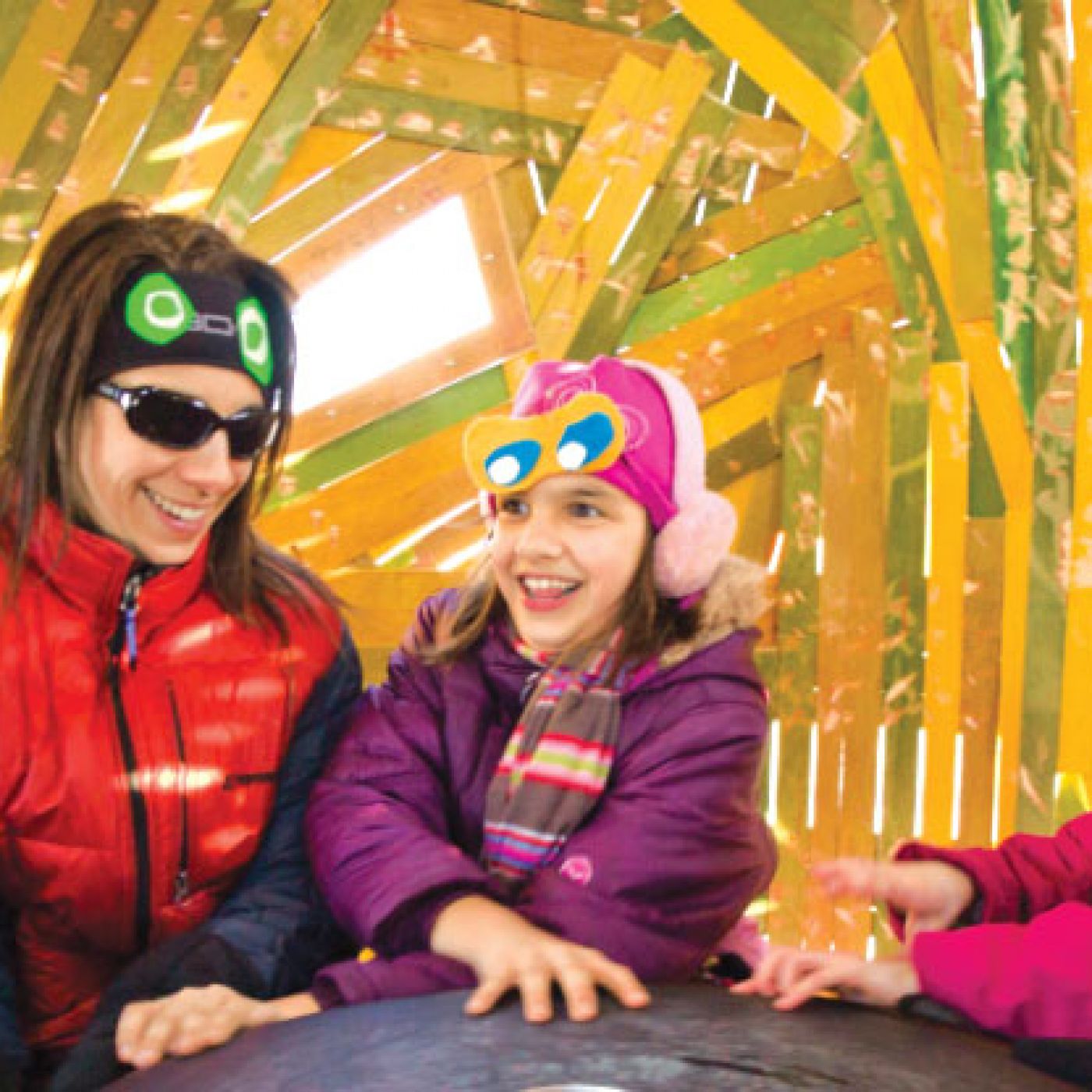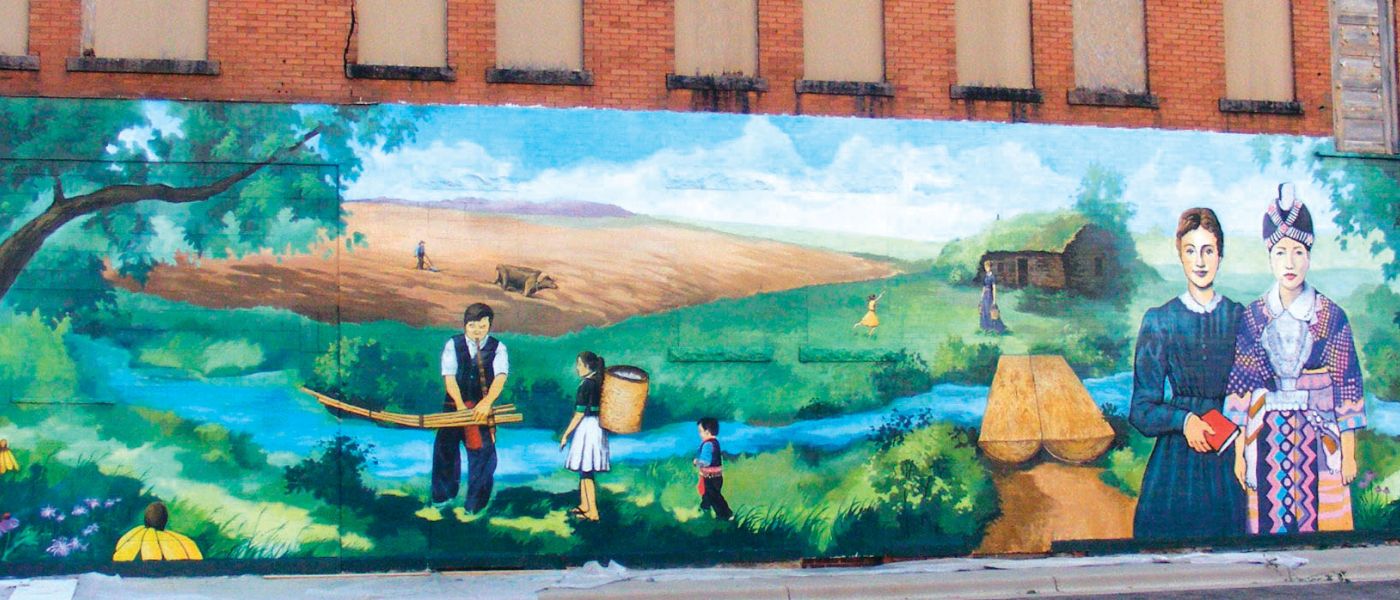ArtPlace America is at the forefront of a national movement to put art and artists at the center of community development.
Author Jane Jacobs, one of the earliest advocates of the concept of human-centered placemaking, wrote in her seminal text “The Death and Life of Great American Cities,” “Cities have the capability of providing something for everybody, only because, and only when, they are created by everybody.”
In its definition of creative placemaking, the National Endowment for the Arts built on Jacobs’ premise by emphasizing the potential of “partners from public, private, not-for-profit and community sectors to strategically shape the physical and social character of a neighborhood, town, tribe, city or region around arts and cultural activities."
ArtPlace America
With the creation of the Community Creativity Cohort in 2015, the Bush Foundation formally recognized the power and potential of artists partnering with various community sectors to animate and rejuvenate spaces, structures and streetscapes; improve public safety; strengthen local businesses; and unite diverse groups and interests. In 2016, the Bush Foundation doubled down on its support of art and culture as a core sector of community planning and development by committing to a significant multi-year investment in ArtPlace America, a national leader in advancing the role of art in community development and problem-solving.
ArtPlace America is a 10-year collaboration (launched in 2011 and due to phase out in 2021) among a number of foundations, federal agencies and financial institutions to strengthen the social, physical and economic fabric of communities by positioning arts and culture as a core sector of community planning and development. In short, ArtPlace is founded on the belief that we should stop asking what communities can do for the arts, and start asking what the arts can do for our communities.
ArtPlace has had strong roots in Minnesota, North Dakota, South Dakota and the 23 Native nations that share the same geography from its genesis, with both the McKnight and Knight Foundations as founding partners. It has funded more than two dozen projects across this region since 2011 (ranging from the planting of “defiant gardens” in Fargo-Moorhead to the creation of a cultural arts market in Minneapolis’ American Indian Cultural Corridor). The Bush Foundation’s five-year $2.5 million investment is instrumental to the four new regional projects that are receiving support from ArtPlace’s National Creative Placemaking Fund in 2017.
“Bush has given us an amazing five-year commitment,” says ArtPlace Executive Director Jamie Bennett. “They’ll be with us to our end of days. It has really enhanced our ability to invest in projects in this region. As with all funding partners, we want to learn from the Bush Foundation’s commitment to the region and connect those conversations with the national conversation around creative problem-solving.”
Art Shanty Projects was one of the local projects awarded an ArtPlace National Creative Placemaking grant in 2016, receiving $100,000 over two years for programming their artist-led mid-winter festival on the frozen surface of White Bear Lake in Minnesota — a community space that is part gallery and part artist residency. Among the goals of the project is diversifying the White Bear Lake visitor population, building on strategic city initiatives and improving economic fortitude by attracting a new array of visitors to the community.
In her application for the grant, Art Shanty Projects Executive Director Dawn Bentley highlighted the project’s impressive community impact in 2014, when 11,300 people visited the art shanties over the course of the installation. “The historically low White Bear Lake water levels were economically depressing the area, so to have more than 11,000 people come to White Bear Lake and spend money in bars and restaurants — and increase gross sales by as much as 30 percent during the toughest time of the year for these downtown businesses — was a really big deal,” says Bentley. “We were using the arts as a fulcrum for transformation in that community.”
The $100,000 two-year grant (in combination with other funding sources) represents a 250 percent budget increase over 2015 for Art Shanty Projects. “One of the things that got us excited about Art Shanty Projects was that it was so rooted in place,” says Bennett. “We loved the notion of connecting with that local tradition of ice fishing and all the ways people trick out their ice houses, and using it as an opportunity to connect artists with that lake-based activity, and connect the lake activity with main street activity to make White Bear Lake a year-round destination.”
Of the 25 projects that ArtPlace has funded in the region, 24 received support from their National Creative Placemaking Fund. The Southwest Minnesota Housing Partnership (SWMHP) represents the only ArtPlace investment in the Bush region from ArtPlace’s Community Development Investment (CDI) program. CDI is dedicated to providing substantial, multi-year support to place-based non-governmental organizations with a community planning and development mission that have not previously incorporated arts and culture strategies into their core work.
SWMHP, one of only six projects nationwide participating in the CDI program, received a $3 million grant over the course of three years to support its work in housing preservation and development across 30 rural counties in Minnesota. “As is true across a majority of rural America, demographics are changing,” says Bennett. “Walnut Grove, Minn. [one of the communities served by SWMHP] was the birthplace of Laura Ingalls Wilder. It has traditionally been all white, but the population is now 40 percent Hmong immigrants.” With such different cultures coming into contact, SWMHP is interested in how arts and culture can enable these rural communities to simultaneously celebrate their heritage and welcome their future.
Bennett points to a mural in Walnut Grove that provides a powerful (and literal) illustration of the power of art to build those cultural bridges. A Hmong family purchased a food market in downtown Walnut Grove that boasted a colorful mural of Laura Ingalls Wilder, and in 2012, the community hired a local artist to update the mural — now Ms. Wilder proudly stands arm in arm with a Hmong elder. SWMHP is taking advantage of the support from ArtPlace (in addition to partnering with St. Paul- and Minneapolis-based Springboard for the Arts and Intermedia Arts) to do cultural asset mapping and work on deepening and expanding opportunities for those kinds of community-artist collaborations across the 30 rural counties they serve. “We’re helping SWMHP explore how they support creative thinking and practices in their own region,” explains Springboard for the Arts Executive Director Laura Zabel. “In a region as diverse and big as southwestern Minnesota, it’s about figuring out a mechanism for them to develop those relationships with artists.”
"Ultimately the goal of ArtPlace’s work is not to enable a handful of specific projects, but to build capacity in artists, arts organizations and non-arts organizations to collaborate on solving community problems."
“Art and culture have the capacity to inspire, but also to help us create change,” says Bush Foundation Community Creativity Portfolio Director Erik Takeshita. “Beyond being beautiful and moving, it can be a vital resource in creating change in the community. It’s less about the product and more about the process — how does it happen, who is involved, who’s driving the work? It’s about building a sense of agency and that network of relationships that lasts beyond that particular project.”









